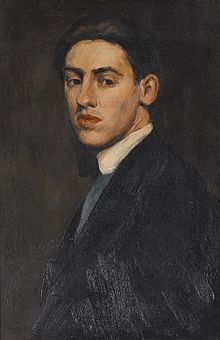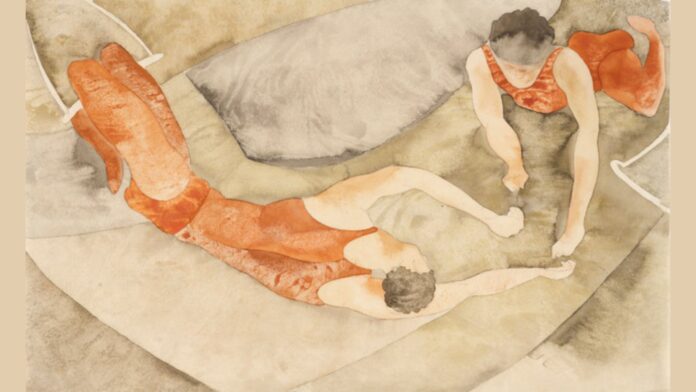Throughout the month of January, the Barnes Foundation will be conducting online classes delving into the work of Pennsylvania-born artist Charles Demuth. He was born in 1883, and was a lifelong resident of Lancaster until his death from diabetes in 1935. He was a highly regarded artist in his day, who worked primarily in watercolors.
According to art critic Ken Johnson, writing in The New York Times, “Search the history of American art and you will discover few watercolors more beautiful than those of Charles Demuth.”
However, not all of the artist’s work was as highly praised as his still-lifes of flowers and fruits, or his dramatic cityscapes. Demuth was gay, and was as uncloseted as the repressive times permitted. He often used his art to depict his erotic experiences in the bathhouses of the day and encounters with sailors and the like, using his art to explore his sexuality in ways that were very rare, and very shocking, for early 20th century American artistic sensibilities.
The Barnes course, titled “Charles Demuth: The Erotic Watercolors,” will focus on Demuth’s homoerotic works. According to the Barnes’ website, “This course examines these works, offering new perspectives on the life of a key artist in the history of the Barnes. How can close attention to Demuth’s erotic artworks enhance our understanding of the artist’s legacy? What is lost by consigning such works to the margins? This course will seek to answer these questions and others as we get up close and personal with Demuth’s most intimate works.”
The course will be conducted by Ty Vanover, an assistant professor of Art History at Dickinson College and an adjunct lecturer at the Barnes who earned his PhD from UC Berkeley. Prof. Vanover, who is gay, focuses his research on queer art of the 19th and early 20th centuries.

Demuth’s orientation and LGBTQ-themed work, like most artists throughout history, tend to be glossed over, or entirely ignored, in the official art history narrative of his life and career. For instance, in an otherwise comprehensive Wikipedia article on Demuth, there is only one sentence that even mentions his erotic output in passing. Prof. Vanover hopes to redress the oversight, a task complicated by the fact that very few of Demuth’s erotic works were intended for public display. After Demuth’s death in 1935, most of the erotic paintings were acquired by private collectors, while assorted pieces were snatched up by such venues as the Barnes in Philadelphia and the Whitney in New York. Even the Demuth Museum in Lancaster has few of these works in their collection.
Vanover’s course will be broken down into four segments, to be conducted each Monday evening in January. The first segment will be an overview of Demuth’s career, to provide context for his later erotic works. The second segment will be a history of homoerotic art in general, from ancient Greco-Roman times to the 20th century. The third and fourth segments will be deep dives into specific demote erotic paintings.
For LGBTQ+ art enthusiasts, particularly those with an interest in the history of queer art, the course should prove enlightening and informative, as most Barnes courses are. For those who have friends or family interested in queer art, the course should be considered as a possible novel and memorable gift for the holidays.
“Charles Demuth: The Erotic Watercolors” is an online course to be conducted Monday evenings, January 8-29 at 6 p.m. For information on registering for the course, visit barnesfoundation.org.

